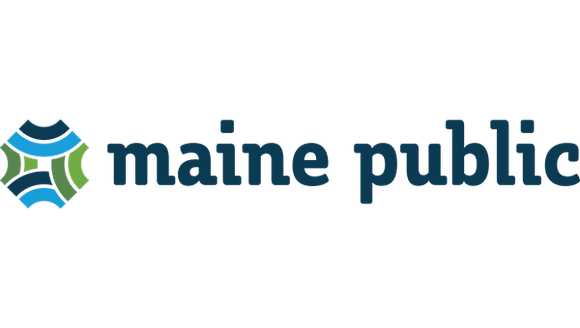Community Science Challenges: Fall 2022
Announcements | Nov 20, 2022
We just wrapped up our community science challenges for the fall of 2022, where we saw 1725 students help contribute to real, ongoing research efforts. Read on for highlights.
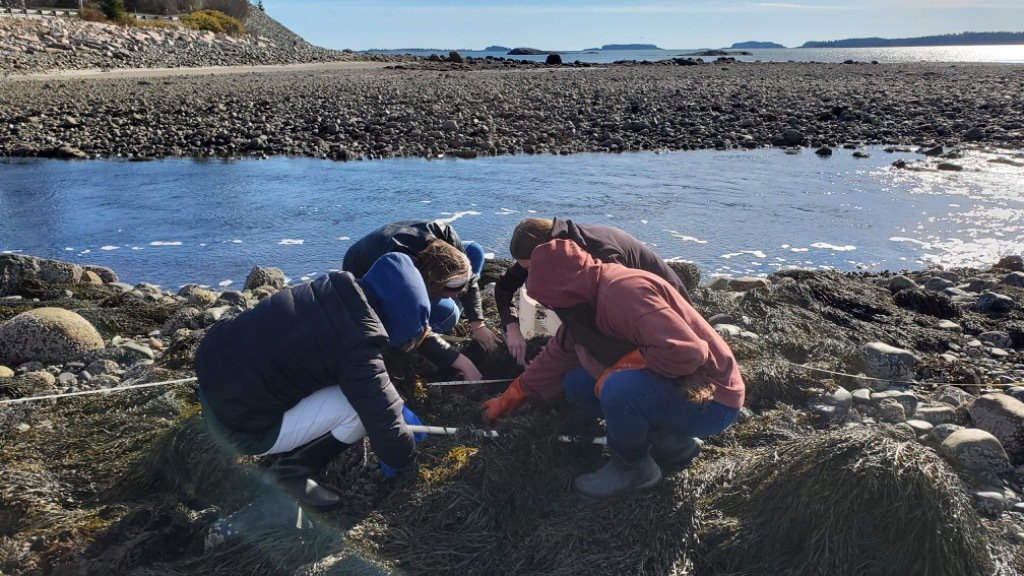
When people think about the impacts of climate change, they usually conjure up images of rising seas and intense storms, but the truth is that climate change is impacting far more than our oceans and weather systems. We set out to develop community science projects that focus on some of the lesser known issues that still matter a great deal to our region’s health and future in a warming world, issues that young student scientists could tackle head on to contribute to our understanding of local impacts of climate change.
Working with local scientists and resource managers, we set out to address questions about how climate change is affecting intertidal crab populations, how knotweed populations might be changing over time as a result of climate change, and about where we can find the hemlock woolly adelgid as temperatures rise through this fall’s community science challenges. For six weeks from early October into mid November, teams of professional scientists, resource managers, students, and teachers worked together on shared research projects to understand local impacts of climate change.
By the Numbers
Effective community science requires community participation, which we saw in abundance this fall.
Students
1725 students helped contribute data to real, ongoing research efforts.

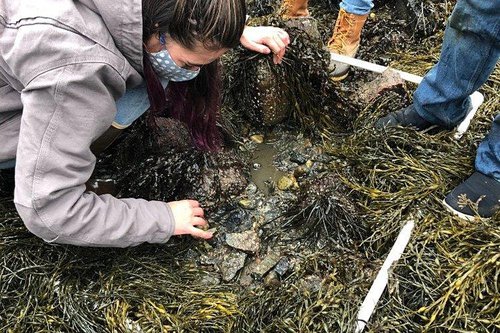
Lead Scientists
Five professional scientists helped guide the collection and analysis of data across three projects
Educators
Nearly three dozen educators provided critical support throughout the fall.
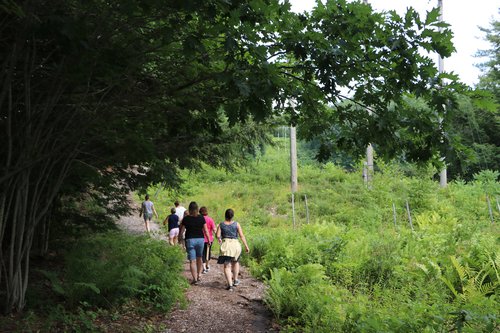
Scientists can't be everywhere at once, so students and teachers add much-needed capacity to research efforts.
Projects
Participants supported intertidal crab research, hemlock woolly adelgid research, and knotweed investigations.
Data points
The intertidal crab project saw 623 data points, the hemlock wooly adelgid project 115, and the knotweed effort had 62 data points — all in six weeks!
Spreading out
Geographical locations
Sharing ideas and observations across geographies surfaced interesting data for lead scientists and prompted powerful learning experiences for students about the nature of science.
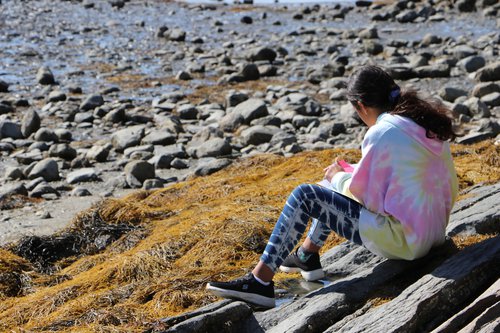
Join our next community science challenge!
Get excited for a magical sign of spring: vernal pools! Brimming with life and essential to forest ecosystems, these extraordinary places provide a rich context for learning about ecosystems, climate change, seasons, and developing a connection to nature. This spring we are highlighting a variety of pathways for youth to engage with vernal pools, in schools, in communities, and beyond and we are connecting the adults in these spaces with each other and resources to support learning. Photo credit: Brenna Crothers.
The data contributed through the community science challenges is already proving valuable to the projects’ lead scientists. For example, as part of the hemlock woolly adelgid challenge, students in Raymond monitored hemlock trees around their school for the invasive pest only recently spotted in their community. Having students on the ground to monitor their area closely helps inform state management decisions. Reviewing the Raymond data, project leader and state entomologist Colleen Teerling had this to say:
“You’re getting good data! What you are doing is really valuable, even when you’re not finding [hemlock woolly adelgid], that is really, really, really valuable.”
Colleen Teerling Maine Forest Service
In the intertidal crab challenge, students in southern and midcoast Maine found a startling abundance of invasive Asian shore crabs. When she saw the results, project leader Elizabeth Stephenson from the New England Aquarium, noticed dramatic changes from when she began her research into Asian shore crabs back in 2002.
“So interesting to see the Asian shore crab population has grown so dramatically from when I was starting my research. So glad I didn't have to count 50 per quadrat by myself!”
Elizabeth Stephenson New England Aquarium
In the knotweed challenge, students gathered data from large and thriving populations of the invasive plant in forested areas. Project leader Stacy Endriss from UNC-Wilmington shared with the group that the populations that she’s studied in New York haven’t been as successful in forests and are generally found in open areas. She shared with the team of knotweed community scientists:
“This is really fascinating information for me… seeing that you have a different dataset, it’s really exciting…I love this. It makes me ask different questions.”
Stacy Endriss, Ph.D. UNC Wilmington
Students involved in these challenges started asking new and different questions, too. Communicating with each other challenged students to draw meaning from results that varied across geographies. Students at the Friends School of Portland were inspired when they heard about results gathered from their counterparts at Waynflete. They had gone to Mackworth Island to collect their data and found only European green crabs. Then they heard that Waynflete had gone down the road to Kettle Cove in Scarborough and had found just as many Asian shore crabs as European green crabs — so they decided to check it out for themselves. When they, too, found much higher numbers of Asian shore crabs in Kettle Cove, they had to reconsider their ideas about which type of crab would become dominant in their area.
From there, students at the Friends school paid attention to what was happening in other locations. Their teacher, Nicole Favreau, said, “We read the updates each week to help us push our claims a little further and help us think about counter arguments to the claims that we were writing.”
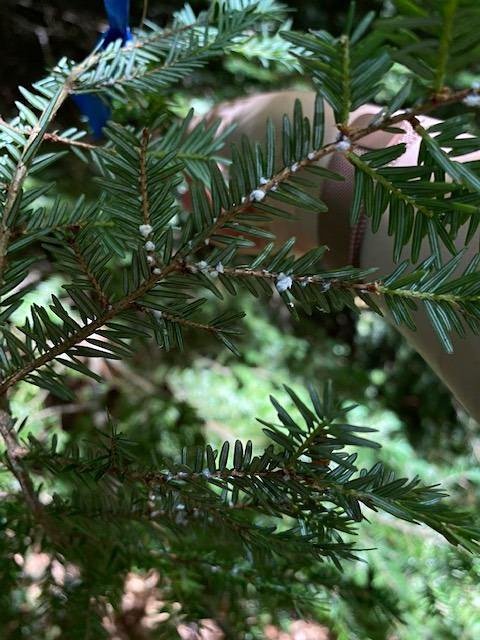
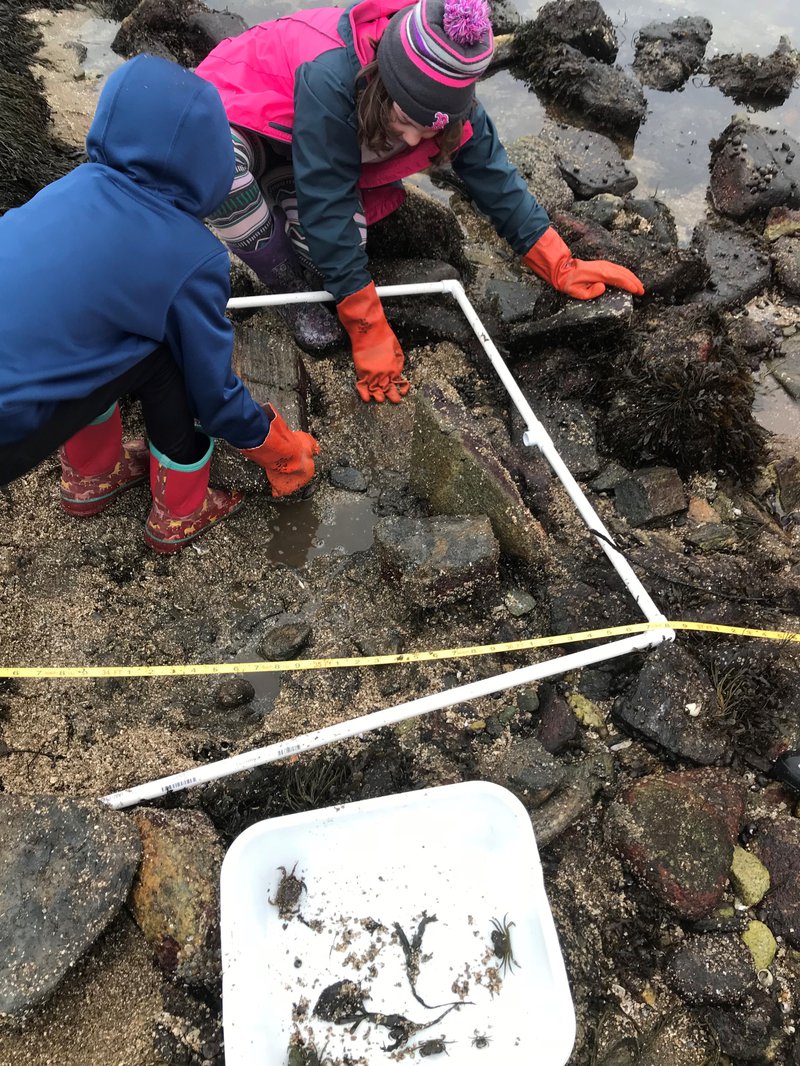

Similarly, students from Souhegan High School returned to the same site where they had collected data the previous fall. Whereas in 2021 they found mostly Asian shore crabs, in 2022 they counted a much higher abundance of European green crabs, contrasting the results from their first year of data collection, and also from other community science groups in New Hampshire and Southern Maine. The project community, including the lead scientists, were intrigued by the results. Souhegan students agreed they would continue collecting data from the same time and place to get a sense of what could be happening and help produce a trend over time. Their teacher described what a powerful learning experience this was for her students:
"Taking the two data points from last year and this year, they wanted to jump to conclusions. It’s been such a really helpful learning experience to say. ‘Hold on, we have two years of data. We can’t make these assumptions about trends going forward.' So, it’s just this authentic discussion about real data that has been so valuable. That opportunity doesn’t exist when you are doing a regular lab and collecting data in the classroom."
Julianne Mueller-Northcott Souhegan High School Teacher
This year’s community science challenges produced more questions than answers about changes in our local ecosystems, but that's often times how science works. The project communities are inspired to continue investigating these complex questions.
One student commented, “I enjoyed being able to go outside and figure out answers that no one else (probably) knew.” Another shared, “I want to do more assignments like this!”
Dorothy Dawson, a teacher from Hampden participating in community science with students for the first time this year described, “This was transformational for me and my students. Both the students and I wish to continue next year!”



